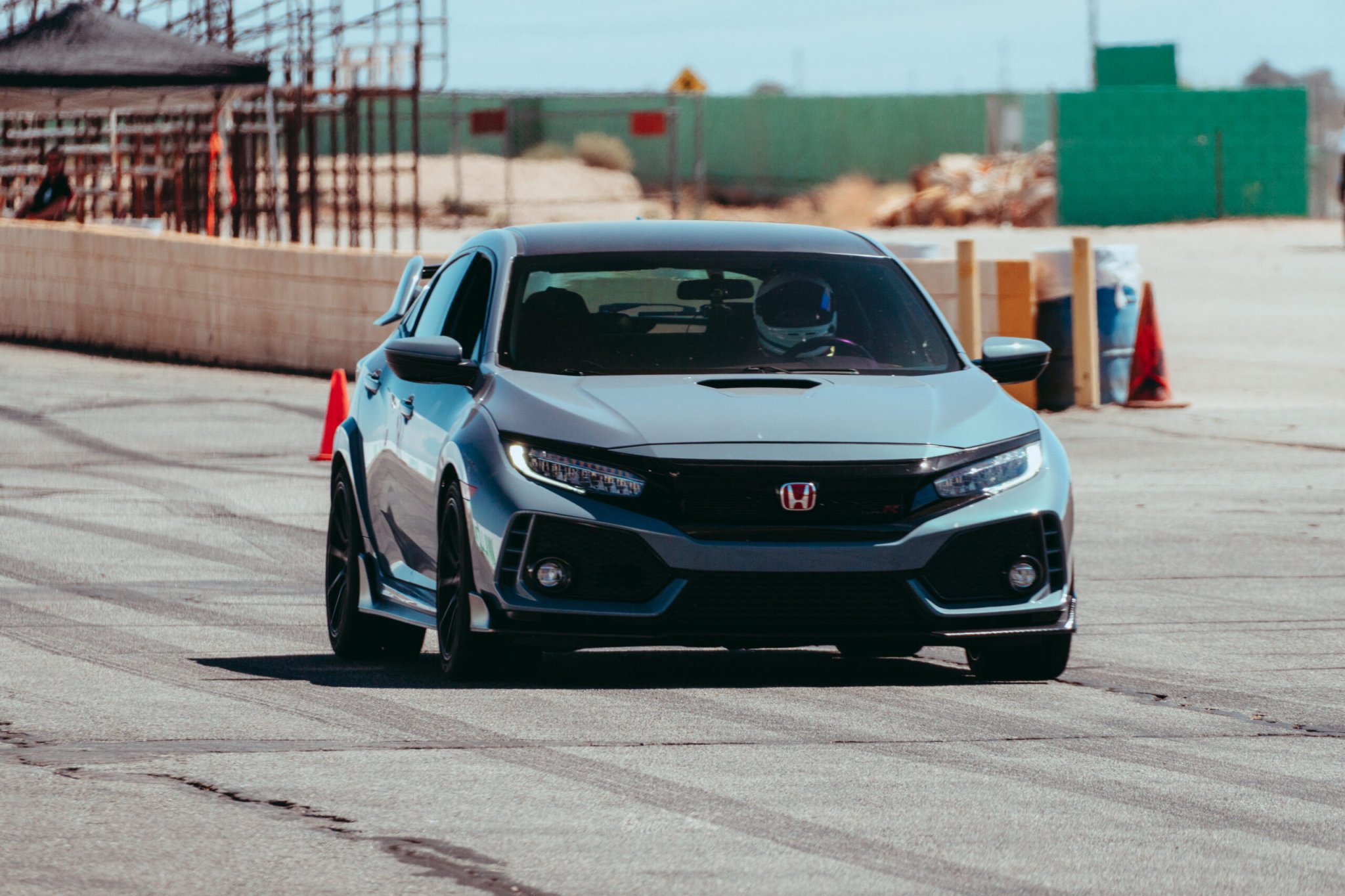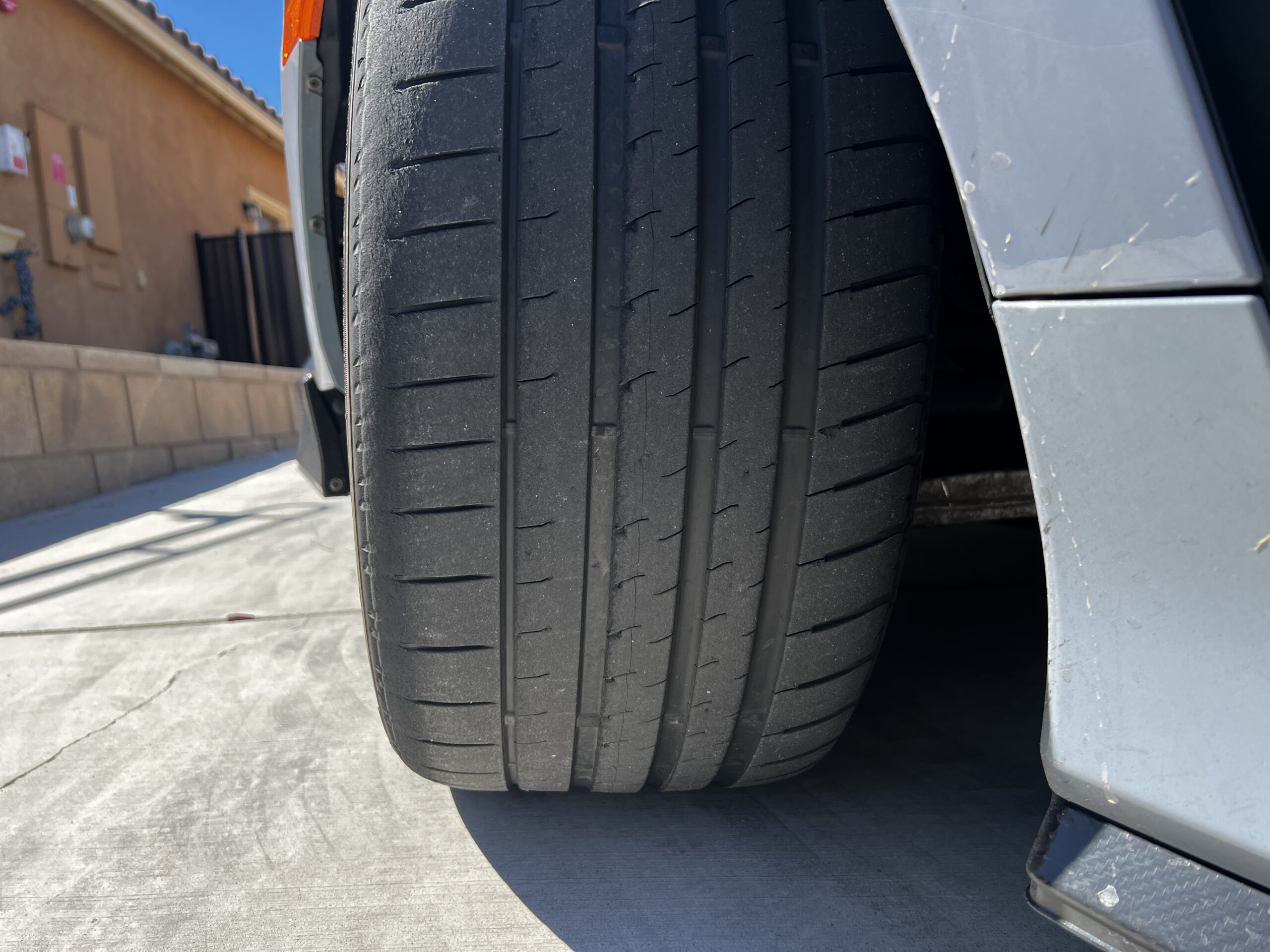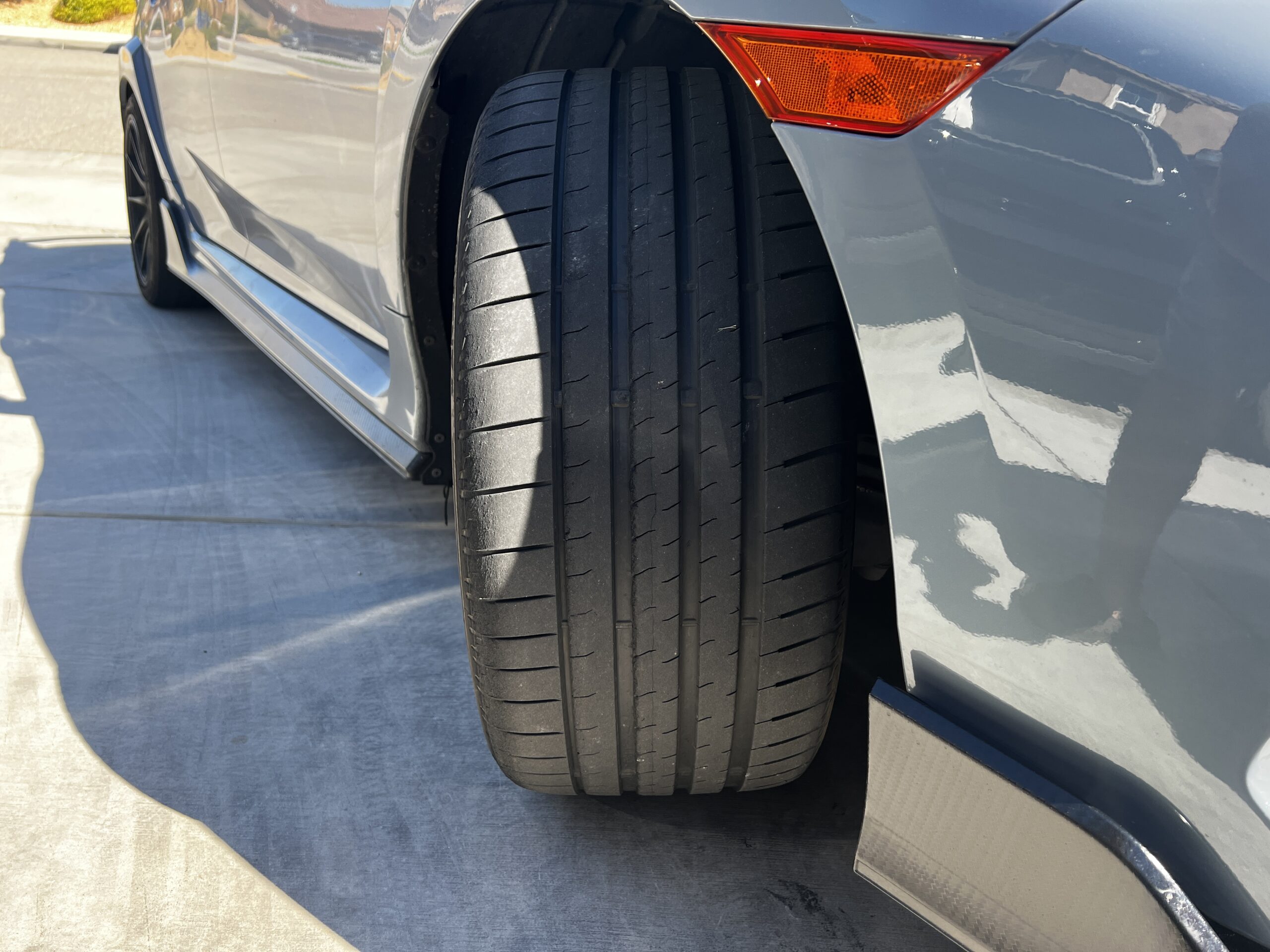

We may earn revenue from the products available on this page and participate in affiliate programs. Learn more ›
It took less than two weeks with my 2019 Honda Civic Type R before I took it to a track day. The folks at Socal Drivers Club invited me out to the fearsome Big Willow road course at Willow Springs International Raceway to test out my new ride and gather some important baseline data about what the CTR is like on track. There is work to be done, friends.
I bought the Civic knowing that I would track it, a lot. It will not be a track car exclusively, because I value street drivability heavily. My goal is to be able to enjoy it in the canyons and be able to throw a set of track wheels and tires on it to have road course fun. But there’s a start to every journey and almost every car can be made better with carefully chosen mods.
With setting a baseline as my primary goal for this track day, I deliberately did the minimum amount of track prep. I had a good idea of what to look for in terms of issues and what mods I want to do, but in the interest of tracking each step I left my car exactly how I purchased it. Though it has an exhaust, intercooler, and upgraded brakes, it has street tires and a street alignment. Just to be safe, I inspected the tires, suspension, and fluids before the track day.
Heading Out on Track
Big Willow is a scary circuit in most cars. Turn nine is just about the nastiest turn on an American road course because of its high commitment 120 mph run through a sweeping right-hander with dirt trenches for runoff. I wasn’t sure what to expect from the car but it was tuned on the high-speed sweepers of Suzuka Circuit in Japan, so it should handle the course well enough.




With the weather mercifully cooling after months of sweltering heat, my first session with the CTR was at a fair 60 degrees Fahrenheit. This gave the car a fair chance at cooling itself and keeping the tires in a manageable temperature window. The CTR has well-documented issues with coolant and oil temperatures on track, which is its one major weakness.
Settling into a rhythm with the fearsome track afforded me a front-row seat to the brilliance of the car. It supposedly makes downforce, but I’d wager it’s closer to zero-lift aero than true downforce. This makes a huge difference around Big Willow, where my indicated entry speed for turn eight was 122 mph.
What impressed me most was the turn-in and trail braking performance of the car. Turn one is a daunting corner, requiring a heavy brake application from 133 mph and trail braking deep into the apex of the corner with a minimum speed of 84 mph. Even on the not-great Bridgestone Potenza Sport tires, the car gave me immense confidence in the braking balance of the car. The suspension in +R mode, the stiffest setting, was also just right with good road resolution and weight transfer.
The only disappointing part dynamically was the mid-corner balance of the car, which can be blamed on two things: tires and alignment. In the phase between releasing the brakes and starting to apply throttle, the car would lose some of its tautness and precision.

There was also the issue of cooling. I got six hot laps in before the temperature gauge started climbing. This was before I invested in software to monitor the true coolant temperature, but based on some research the gauge starts climbing at 220 degrees. Pushing for another lap with the gauge perked up resulted in noticeable power loss and hotter temps, but it never spiraled out of control. One 60-percent speed lap allowed the temps to come right down. But there was substantially more turbo lag after it got hot, which means it got heat soaked.

At the end of the day, I took home a 1:39.1 lap time. For reference, experienced CTR guys with serious track setups run 1:30 flat. I’d wager there are several seconds in tires, alignment, and more bravery. But let’s assess the car.
Reading the Car
I completed a full day of lapping in the car, with multiple sessions all at different temperatures. The final session of the day saw 90-degree ambient temperatures, and the Civic managed only three hot laps before temps climbed. The heat also kills tires and just hurts the car, so it was time to stop and assess the day.
The most important thing to read after a track day is the tires. And by reading the tires, I mean looking at the wear patterns, tread condition, and looking for abnormal chunking or tearing. Of course, also watch tire pressures throughout the day as well. Reading the tires on the Civic tells me a few things.


Outer and inner shoulder wear are telltale signs of insufficient negative camber. The outer wear is intuitive because that is the most loaded part of the tire and negative camber shifts the load inward by posing the tire differently. The inner wear comes from the deformation of the tire due to the shear stresses of cornering, but also from being the inner, unloaded tire. At Big Willow, the right-hand turns are the most punishing to tires, meaning the driver’s side is more abused during the lap. The front tires tell this story clearly.
Think of a bicycle or a motorcycle. Most of the steering is done by leaning, which is effectively adding and subtracting negative camber. Camber helps cornering by changing the way the tire deforms and theoretically shifting that lateral load into vertical loads.
This tire also shows some chunking on the center tread section, which is a sign of incorrect tire pressure and some overheating. Because this is a street tire, this is to be expected. In my experience tracking front-wheel-drive cars, which are nose heavy and brutal to front tires, the deformation of the center of the tire is a characteristic also helped by optimizing negative camber. Again, it’s the shear that deforms tread blocks causing this.
Finally, the car clearly needs some help with cooling. There are solutions that help the issue, but it seems like heat management will be a forever problem. For now, I plan to leave it alone because of the colder winter temperatures, but I am plotting some thermal management for the turbocharger and intake system with the hope of reducing underhood temperatures. In the future, an upgraded radiator and oil cooler is in order.
As for adding camber, the design of the CTR’s front suspension forces it to use a very short but wide spring to get enough spring rate. Thus, camber plates are not an option. Instead, Hardrace makes a ball joint that adds camber and track width. That will be done immediately.
There was a lot of valuable data gathered from this track day. This car is so unbelievably close to the perfect front-wheel-drive car, but it just needs that final push across the line. Stay tuned to see where it goes.